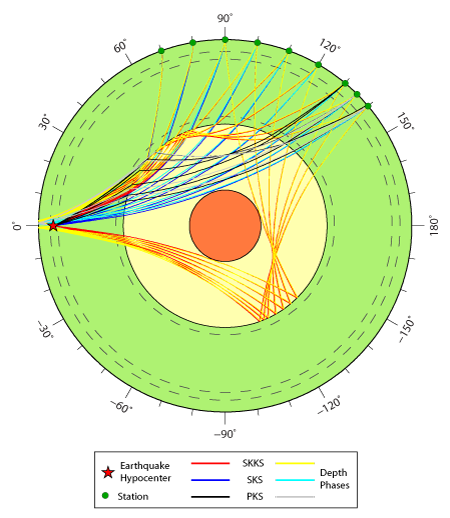Shear Wave Anisotropy at the Lower Mantle
Preliminary studies of seismic anisotropy using SKS splitting measurements made an assumption that the lower mantle is weakly anisotropic, and attributed the observed splitting to the upper mantle or crust. In the last decade, however, there has been growing evidence from S, Sdiff, ScS, SKS and SKKS waves indicating significant anisotropy at the base of the mantle. These seismological observations are complemented by mineral physics studies that report strong anisotropy in elastic properties of the lowermost mantle constituents, such as post-perovskite. Although preferred alignment of the anisotropic minerals can provide a viable explanation, seismic observations also suggest the presence of a more complicated mechanism involving chemical inclusions and thermally distinct regions. Such regional-scale features could be associated with flow near the base of the mantle resulting from strong lateral and radial thermal gradients. Oceanic materials from subducting slabs, partial melting, and possible chemical reactions with the core may also contribute to observed anisotropy. Resolving this highly heterogeneous picture of the lowermost mantle is critical for investigating the flow dynamics, structure, composition, and evolution of the Earth.
In this study, we aim to provide constraints on anisotropy near the base of the mantle. Splitting analysis using a single seismic phase provides a path-averaged measure of anisotropy, and it is difficult to isolate the contribution from the lowermost mantle. In contrast, the differential splitting of two phases that have very similar ray-paths through the mantle, except near the core-mantle boundary, gives more direct observation of anisotropy. We choose to examine the PKS waves, because (1) they ensure that the splitting originates along the receiver leg of the ray-path, and (2) there are two branches of this phase, PKSbc and PKSab, with nearly identical paths within the mid- and upper-mantle. We also analyze the depth phases of PKS, i.e., pPKS and sPKS, to complement our PKS database.

We decompose the splitting of two phases from a given source-station pair, for example, PKSab and pPKSbc, into two components. The first component is splitting that is consistent between the two phases. This reflects the anisotropy due to the structure between the mid-mantle and the Earth’s surface, where corresponding ray paths sample approximately the same structure. The second component is the differential splitting that characterizes the lowermost mantle anisotropy where the ray paths are separated. This differential splitting provides direct measure of lateral variations in anisotropy near the core-mantle boundary. By combining measurements from different source-station locations, maps of anisotropic variations near the base of the mantle are obtained. We also report splitting measurements for individual phases that provide further constraints on upper-mantle anisotropy.
Initial results of this project are presented at the AGU Fall Meeting (2012).